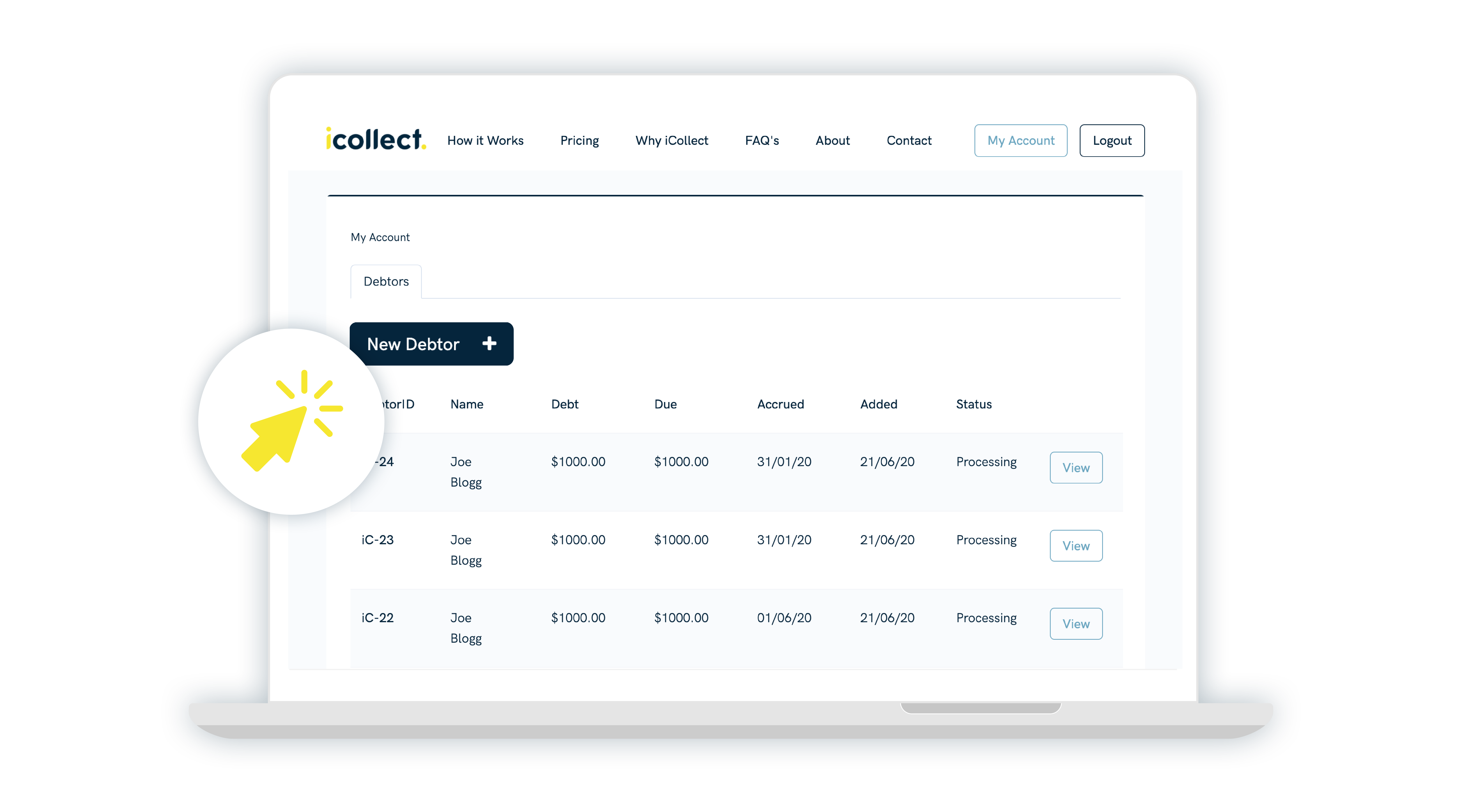Before you make the all-important decision on the best debt collection method, including whether debt recovery software is right for you, it’s important to understand the process of debt collection in New Zealand.
There are four stages to the debt recovery process and getting outstanding invoices paid.
Communication in the form of a debt collection letter is sent to the debtor advising them the debt is outstanding and requires payment. They need to be given a reasonable period of time to pay the amount, which is usually seven days from the date of the letter.
How can iCollect help?
Businesses can choose to go straight to a debt collection agency for help. However, if you prefer to own this part of the process, iCollect puts the control in your hands, without needing to pay a hefty agency commission.
iCollect offers two letters which can be sent to the debtor. The first letter lets the debtor know that a debt collection agency has been engaged and requests payment of the debt. The second letter is a credit default notice, which allows Step Two to commence.
If you can show that a demand was made for a recovery of debt, you didn’t receive a response within the time requested, and a client hasn’t paid the outstanding amount, you can apply for an order to compel the debtor to repay the debt.
This can be obtained from the District Tribunal, the District Court, the High Court or any other tribunal. Once an order is issued, it is legally enforceable.
How can iCollect help?
iCollect sends a third letter, advising that court proceedings have commenced. This fulfils all your obligations around giving warning and attempting to gain payment before going to the Disputes Tribunal with court proceedings.
The most common option for recovery is to order for examination of the debtor's ability to repay debts, which is made before a registrar at the court. The ability of the debtor to repay the debts will be assessed and a repayment schedule ordered.
If the debtor isn’t responsive to any of these orders, an order for liquidation or bankruptcy can be made. In this case, the Insolvency Office assigns a liquidator or official assignee to examine the debtor’s assets and liabilities and make arrangements for repayment of the debtor's debts. As part of this debt recovery, it’s possible to recover the legal costs and interest fees from the debtor.
An alternative option is to register a credit default against the debtor, which is in place for up to five years and will affect their ability to raise credit.
If the debtor is behind on several payments, a court-ordered payment is given priority over unsecured creditors.
The court process is lengthy. A simple case takes a minimum of three months, and more complex cases can take 18 months, so ask yourself whether you are willing to wait this out. Also remember that recovering your debt ultimately depends on whether the debtor has the money to pay it. If there are insufficient funds to repay the outstanding amounts, seeking recovery may not be the best business decision for you.
How can iCollect help?
Although iCollect doesn’t handle this stage of the process, we recommend sending requests for debt recovery through to Guardian Credit Services, a debt collection agency, before taking it to the Disputes Tribunal.
